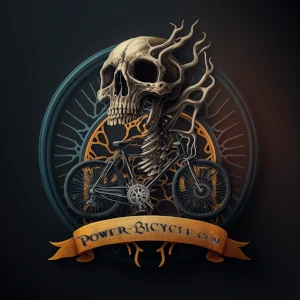CNC Heads for bicycle motors
More speed - High compression cylinder heads for motorized bikes

CNC cylinder heads
Check the latest prices on Bikeberry - Power-bicycle is reader supported. When you buy through links on our site, we may earn an affiliate commission.
Go Faster with a high compression head
If you are fitting a high compression cylinder head to improve the top speed of your motorized bike, I recommend you have an overview of the best tuning practices.
You can click here to get step by step recommendations of the best 2 stroke tuning process.
Alternatively, if you prefer visual information then click on the infographic thumbnail on the right.
Motorize bike tuning infographic

CNC cylinder heads
Click on this image for the full size 2 stroke tuning infographic

Overheating piston
The combusion process
Thousands of an inch before the piston reaches the top of the compression stroke the compressed air/fuel is ignited by the spark plug. We have to realize that at 4000 RPM, the piston travels from TDC to the exhaust port in 5 thousandths of a second (0.005 of a second).
If we look at the explosion in these time frames then the flame front of the explosion is important: After the spark, the flame spreads away from the spark plug electrode. This initial ignition is relatively slow compared to the speed of the piston. In fact, at the speed of the initial burn, the next compression stroke would be starting before the flame burns all the mixture. This is why ignition is set to spark a few degrees before TDC.
In the microseconds following the spark. the flame front picks up momentum, spreading more rapidly. The correct ignition timing ensures that most of the fuel burn takes place when the piston is at the top of its stroke and the fuel/air compression is maximized. By the time the piston is traveling down the barrel, the fuel/air mix should be entirely burned.

Cylinder head design

Flame front in cylinder head with offset spark plug
From this information, we can begin to understand good and bad designs for cylinder heads. For example, offset spark plugs are poor design as they provide a relatively long and uneven burn.

Diagram showing progression of the flame front
At high engine RPM, the mixture is not fully burned until the piston is significantly further down the power stroke.
Performance of offset cylinder heads

Flame front in cylinder head with offset spark plug
The bell shaped combustion chamber projects the force downward. In addition, the shape of the cylinder head applies force earlier in the power cycle.
High performance cylinder heads

CNC cylinder head
CNC cylinder heads look macho and provide fantastic cooling for bicycle engines.
Cylinder head comparison tests
Performance of CNC machined cylinder heads



